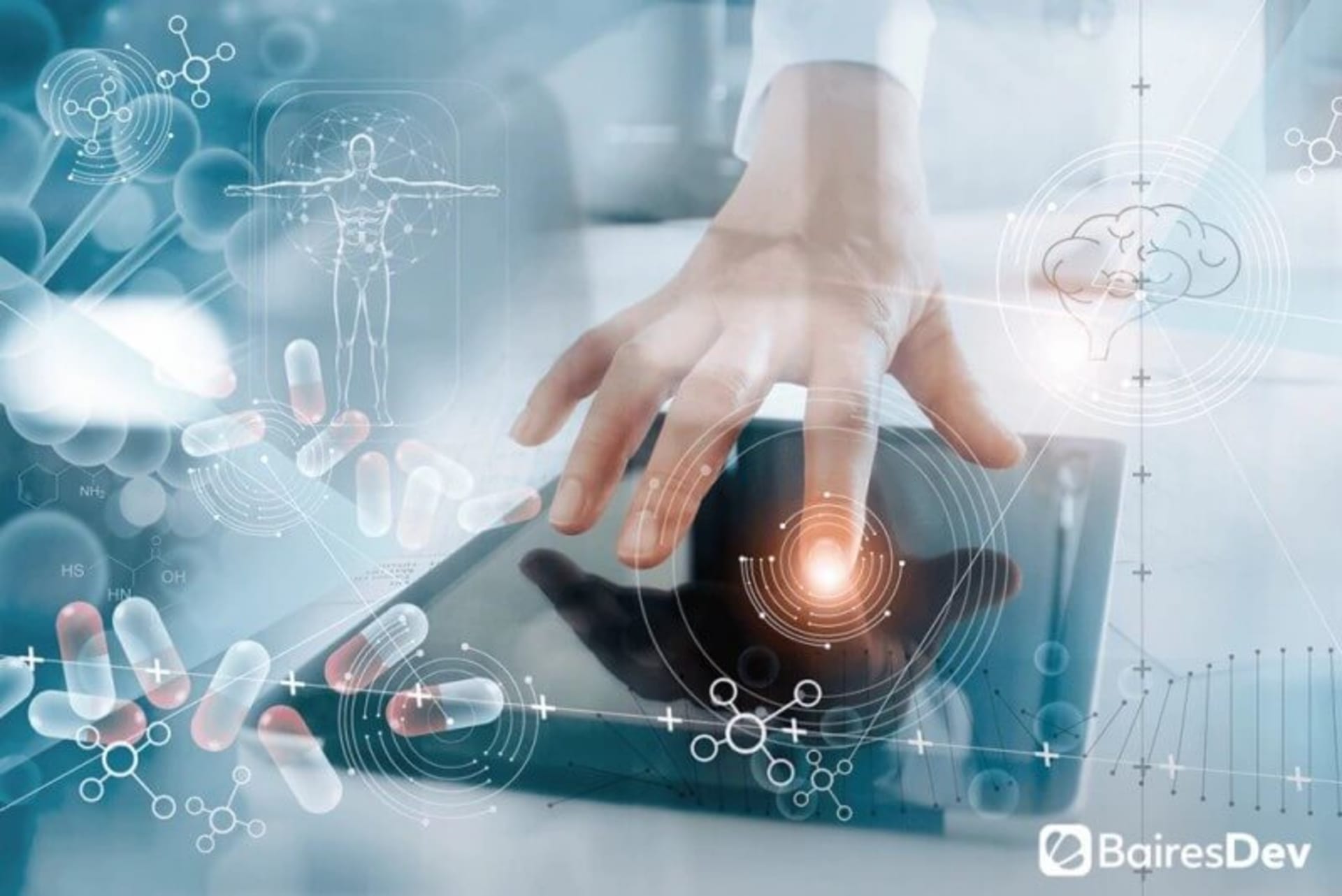2020 has accelerated many trends across industries but it’s hard to think of a sector more widely impacted by the swift tech developments made throughout the year than the healthcare industry. It’s only natural, as the COVID-19 unleashed a global health crisis that demanded the best and fastest solutions to face the new challenges.
Thus, we’ve seen the rise of telemedicine as a way of distancing and preventing further contagion. We’ve witnessed the deployment of AI-driven algorithms to analyze the virus, propose new treatments, and develop a vaccine in record times. We’ve even spotted novel uses of robotics for healthcare assistance.
Among all those developments, one that feels especially promising is the Internet of Things (IoT) when applied to the sector. It has already proven its worth during its pandemic through smart 5G-powered thermometers to monitor patients with fever and smart bracelets and rings that gathered vital signs (such as heart rate and blood oxygen levels) and gather data for further analysis.
But, as impressive as those uses are, it’s the future of the IoT that looks more promising, especially with the hints we can already see around us. Let’s review some of the most interesting ones.
Wearable Monitors
One of the most obvious uses for the IoT in healthcare is monitoring patients through IoT devices. I’ve just mentioned the smart thermometers, bracelets, and rings that gather information about patients’ vital signs. But there’s more to it, with uses that are nothing short of impressive.
For instance, remote glucose monitoring is possible with a dedicated IoT device that continuously and automatically reads the levels at predefined intervals and sends the information to a central monitoring device for its control. And then there are the hand hygiene monitors that remind doctors to wash their hands to mitigate risks, especially when visiting patients at higher risk of infection.
More impressive than that are the monitors for mood and the ones for Parkinson’s. The formers are “mood-aware” devices that collect data (such as heart rate and eye movement) and later interpret it to infer the mental state of patients at a given moment. Parkinson’s monitors were designed to control the associated symptoms of patients suffering from the disease, which relieves them from having to spend countless hours under observation by medical specialists.
All of these monitors aren’t just a means of symptom control for specific patients. By collecting data, healthcare providers can later use AI-powered solutions to better comprehend the circumstances that trigger specific changes, thus providing a deeper understanding of the health issues themselves.
Swallowable Sensors
Wearable devices quickly find their limitations as they can only measure the signs that can be collected from outside the body. But many medical tests involve a more invasive approach, such as cameras and probes to inspect the throat or the digestive tract. These tests are often uncomfortable and require a lot of time and precision to be performed. So it’s good to learn that researchers are working on ingestible sensors to replace them.
Imagine a little sensor that you can swallow like a regular pill but that can read your vitals from inside your body – that’s precisely what IoT can bring to the table. With them, doctors could measure different signals (such as the stomach PH level) and identify potential problems (such as cysts, internal bleeding, and tumors).
Though they aren’t a reality just yet, several companies are collaborating with some of the best IoT professionals through IT staff augmentation to come up with a version that’s small enough to be easily swallowed and that can be easily passed or dissolved after they served their purpose. Given the advancements those companies are making, it’s likely that we’ll see the first ingestible sensors in the near future.
In-Body Devices
Swallowable sensors aren’t the only devices that could read vitals from inside the body. There are other IoT devices being developed to help with other common problems that can only be monitored from inside the body.
For example, smart inhalers could change the lives of millions of people with asthma by measuring air quality in real-time and sending alerts when the conditions pass a dangerous threshold. Thus, medical practitioners could gather data on the frequency of attacks and the conditions when they happened, which could lead to a deeper understanding of the triggering events.
Then there are the smart contact lenses that provide some opportunities for healthcare (as well as for other purposes). These devices could include relevant information for doctors performing an operation, such as vital signs of the patient and important conditions they should keep in mind about that particular patient. Patients could also benefit from them, especially those with vision issues since the lens could better adjust themselves to the surrounding conditions and offer reminders to help patients see better in any given environment and without forcing their eyes.
Robotic Surgeries
One of the most promising alternatives in IoT for healthcare is the development of internet-connected robots that could navigate our bodies to perform complex procedures that would require extreme precision from a doctor. Thus, surgeons could control the little robots to perform less invasive surgeries that would leave fewer scars and provide faster recovery times for patients.
Sounds like science fiction? Far from it. There are several successful trials for these robots, from robots able to remove cancerous tumors from patients to robots that can perform eye surgery with impressive precision. While they haven’t been widely adopted, the healthcare sector already has a symbiotic relationship with robots, so you can expect these tiny robots to become more common in the near future.
Integrated IoT is the Key
All of the devices above (and all of the IoT devices, really) offer more value when they are integrated into a smart network that exceeds them and their connections. Rather than just performing tasks autonomously, healthcare IoT devices need to be connected with other solutions (mainly AI but also augmented reality, 5G, and edge computing) to make a bigger difference in medical practices and patients’ lives.
That’s because a more sophisticated digital environment provides a deeper understanding of the body, its conditions, ailments, and diseases by combining monitoring capabilities with analytical algorithms in real-time. Such integration isn’t just amazing to better understand our bodies – it can actually save lives by providing vital information that allows for quicker and more precise treatments.
In short, IoT devices for healthcare need to go beyond the mere connectivity and into a true integration that can provide those devices with further value and bring better solutions closer to the patients. Given the digital acceleration we’ve experienced during the pandemic, that dream appears nearer than ever.
If you enjoyed this, be sure to check out our other IoT articles.







